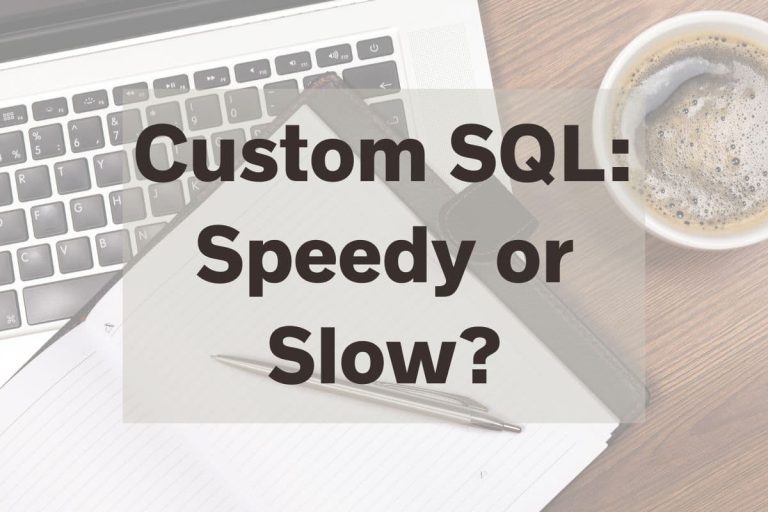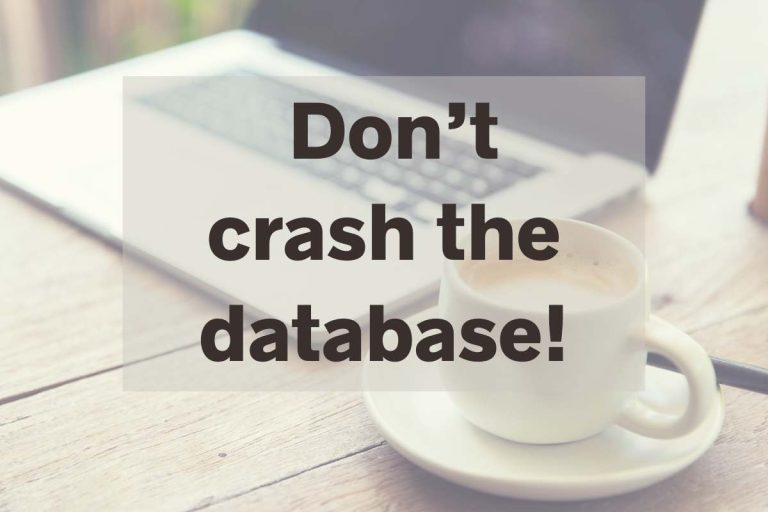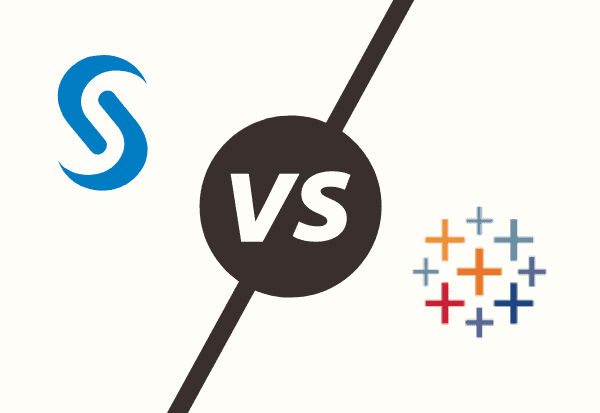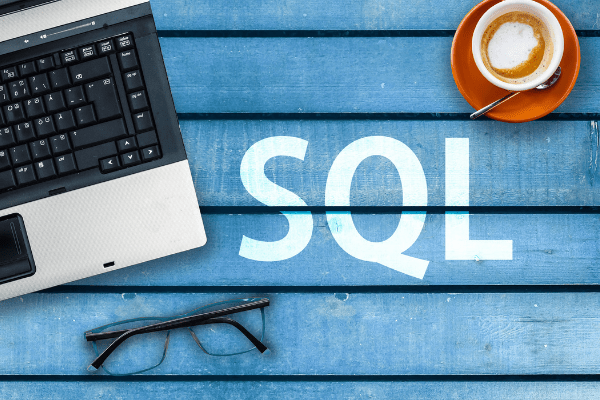Is SAS Hard to Learn?
There are many data tools available for you to work your data magic with. Python, Oracle, Databricks, SAS. The list goes on and on. The field can feel overwhelming. This is especially true if you are considering learning a new tool with so many out there. So the question remains, is SAS hard to lean?
SAS is not any more or less difficult than competing data tools. The learning curve is greatly reduced if you have knowledge of another data tool, but you need to have an understanding of advanced math and statistics concepts to master SAS.
What is SAS?
To begin to understand how easy or hard SAS is to pick up, let’s start with talking about what SAS is.
SAS is an analytics software solution, and they offer many products with the following as the primary product line up:
- Base SAS
- SAS Enterprise Guide
- SAS Enterprise Miner
- SAS Studio (web-browser based SAS 9 + SAS Viya)
- SAS Visual Analytics (aka SAS Viya)
That said, they have hundreds of products which you can browse through on their site.
Through their products, you are able to manage, retrieve, alter, mine, and perform statistical analysis on your data depending on the product. Some products do more or less of these functions, and some have more or less user friendly, point-and-click.
However, since I generally see this question from those in the context of how Base SAS or Enterprise Guide relates to learning tools such as Python or R, so let’s dive into these specific SAS products to talk through how easy SAS will be for YOU to learn.
Base SAS and Enterprise Guide Background
Base SAS and SAS Enterprise Guide (EG) have a lot in common.
Essentially, Base SAS is the stripped down, most basic form of SAS that you write code in whether you are looking to access data, massage it, or perform your statistical magic on it.
When I say Base SAS is basic I simply mean that this is quite literally the foundation of their product line-up. It’s like they put different user interfaces on top of this product to create all of their other products.
Enterprise Guide (EG) gives point-and-click functionality to the product with wizards and menus reminscent of Windows style products most users are comfortable with. Those wizards simply write Base SAS code for you.
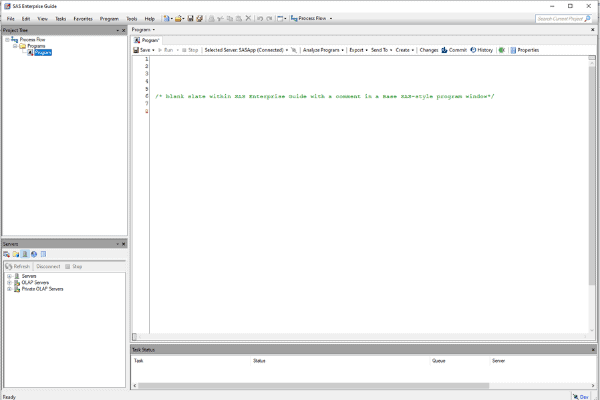
Backgrounds That Make Learning SAS Easier
SQL Experience
Here is what a snippet of code looks like written in Base SAS or EG:
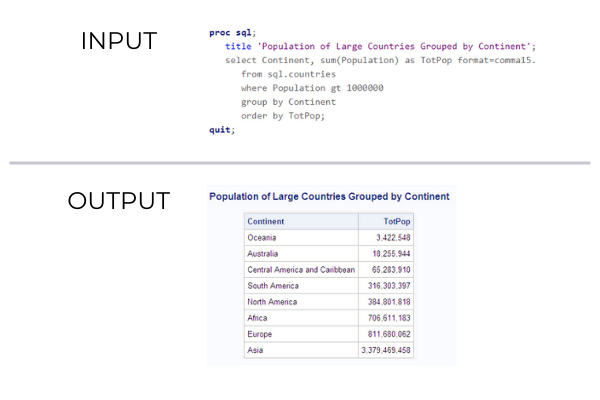
In the example above, you’ll notice the code starts with a ‘proc’ statement which translates to procedure abbreviated within SAS. Most of what you’ll do in SAS begins with that proc.
SQL then follows in that example. While SAS has many proc statements that are not SQL based, you have a host of options available to you through SQL knowledge, so if you know SQL, you may find SAS easier to learn by beginning there.
If you have experience working with SQL, learning SAS is easier, particularly within the space that you have been working with SQL.
If your experience with SQL is in the data transformation space like in ETL, those SQL statements will translate well for you. If you know SQL from a data querying standpoint, again, you’ll have a good foundation.
You’ll simply need to fill in knowledge gaps for the many functions that are not SQL based such as importing data and displaying more report-style output.
There is a funny story to how I learned SAS, but the relevant, cliff-notes version is that I started by learning the basic SQL query structure of Select… from…. where… and built what I needed through proc sql until I get some more training under my belt.
Python, R, or Coding Experience
Base SAS is the most obvious comparison to tools such as Python or R because they are code based user interfaces at their core. Therefore, if you know Python or R, you will find SAS easy to learn.
My data science career began with SAS, but I have trained others along the way. A trick I’ve found here is to simply search for comparison functions with the tool you know for the tool you don’t know. If you know one tool, picking up the tips and tricks of another is much simpler than learning from scratch for this reason!
The underlying experience you have from knowing another code-based language with writing logical functions and what is available to you will go far in helping you learn SAS.
Some people prefer R, some Python, but seriously, if you can work with 1, you can make any of them work for you. I started with SAS, then I went to work with a company who preferred R, and then I went to a company that wanted me for my SAS experience and then demanded I become a Python ‘expert’. You got it, boss!
If you have a background in another coding tool, I’d start with a fundamentals training option to help you, but SAS does provide a free training on SAS if you have an R background.
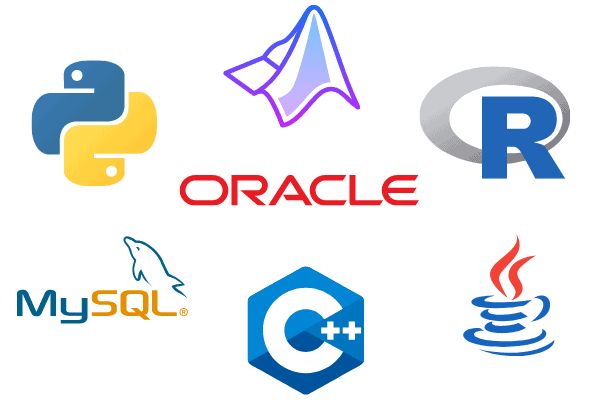
Other Statistical Tools
While I have not had the experience of working in statistical tools such as MATLAB or STATA, I have trained others that do have that background. Having that skill set will help you learn SAS because you already know what is possible.
I feel like half of the battle is knowing what tool to pull out of your toolbox. If you already know the background of the algorithm you want to work with, you’re simply pulling it from a different toolbox is all. You’re not learning how to use the tool from scratch like someone without this experience would.
Advanced Math or Statistics Experience
While SAS itself is not difficult to make it do a variety of functions, having an understanding of concepts in linear algebra, calculus, statistics, machine learning, or some other computer science-y background will truly be needed to use the tool well if you plan to pull out those more advanced functions.
This is what I see as the biggest issue with having tools that you can pick up by handy searching techniques. You can technically apply an algorithm to a dataset, but do you know the levers to pull based on your data?
What do you do if your target variable is considered a rare event? Did you even look to see if that is the case with the dataset?
How does that model handle missing items in your dataset? Is it throwing out the entire row or skipping just that variable?
There are a lot of underlying concepts to the advanced data science and machine learning functions that you’ll need a grasp on to fully master the tool and what it can do, so having a background in statistics, advanced mathematics, or computer science will be greatly beneficial to learn and master SAS fully.
Is SAS Hard to Learn Without SQL, Coding, or Stats Background?
Learning anything requires you to go through a training and interact with the material consistently, preferably in a real-world, hand-on style. If you understand this concept to learning, then SAS is no different than taking on any other data tool.
SAS is not difficult to learn if you have the capacity to devote the time to learn and practice. However, a benefit to learning SAS over competing software is that they offer straight-forward, comprehensive beginner trainings for free. Other tools such as Python requires you to hunt for training from third-party sources, but SAS gives you a foundation for free.
SAS also has a full training catalog that will take you from beginner to advanced. A company I worked for in the past sent me through an advanced third-party course, and I have gone through advanced SAS courses online. I swear I got more out of the SAS course than the third-party, but I get that training can be a YMMV (your mileage may vary) thing.
If you are starting from scratch, I recommend you focus your efforts on learning SAS Enterprise Guide (EG) instead of Base SAS. EG gives you wizard options. Coding doesn’t always come natural to people, so this gives you a framework to build upon as the code you need will supplement the wizard-produced code versus starting from scratch. You can focus on conepts and navigation and build from there.
How to Learn SAS
Base SAS
Whether you have experience in any of the above or no experience, I recommend you take this FREE option if you are up for a video, on-demand training.
If you have experience, the learning curve of the tool will be easier as you are simply learning the layout and basic functions to get you started.
If you have no experience, the training still walks you through the concepts and takes you through scenarios to learn from, as well.
This class is 21 hours, and the e-learning version is literally what I used to prepare for the SAS Certified Specialist: Base Programming Using SAS 9.4 certification.
Once you have a good grasp of using SAS, they have other free courses to help you understand basic statistics and basic statistical options within SAS, as well, which is critical if you want to master using SAS as a data analytics tool.
Enterprise Guide
If you want to learn SAS with more point-and-click functionality to reduce the code you need to learn right away, you can take a foundational SAS course focused on justy queries and reporting through EG. However, even the self-paced, on-demand version is not free for this course. Here is the link to their schedule of classroom, live-web classes, and e-learning.
If cost will prevent you from learning SAS, I’d stick with learning Base SAS.
Closing Thoughts
Data people can get very passionate about their preferred tool. However, if you are willing to put forth the effort to learn and apply the concepts, I think you’ll find SAS as easy or hard as you find learning anything completely foreign to you.
You’ve got this!

